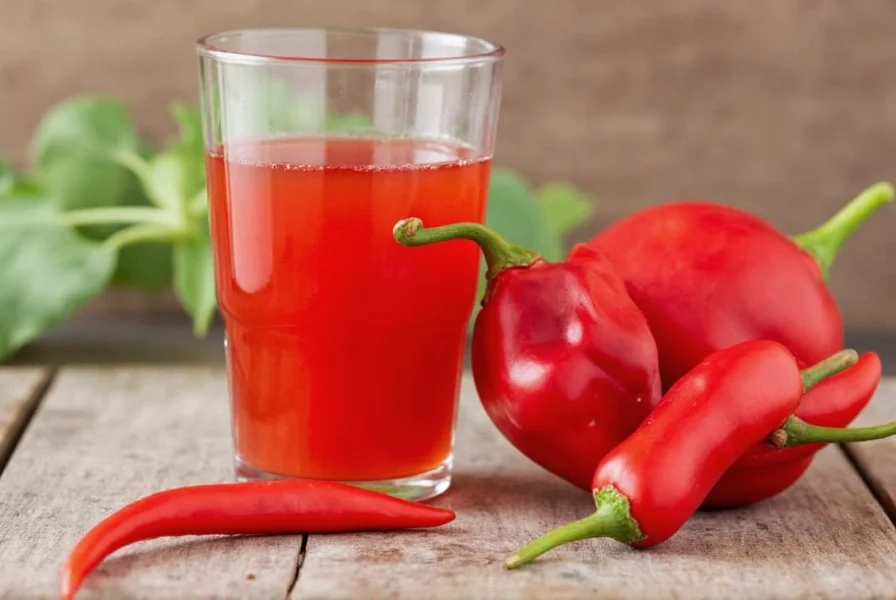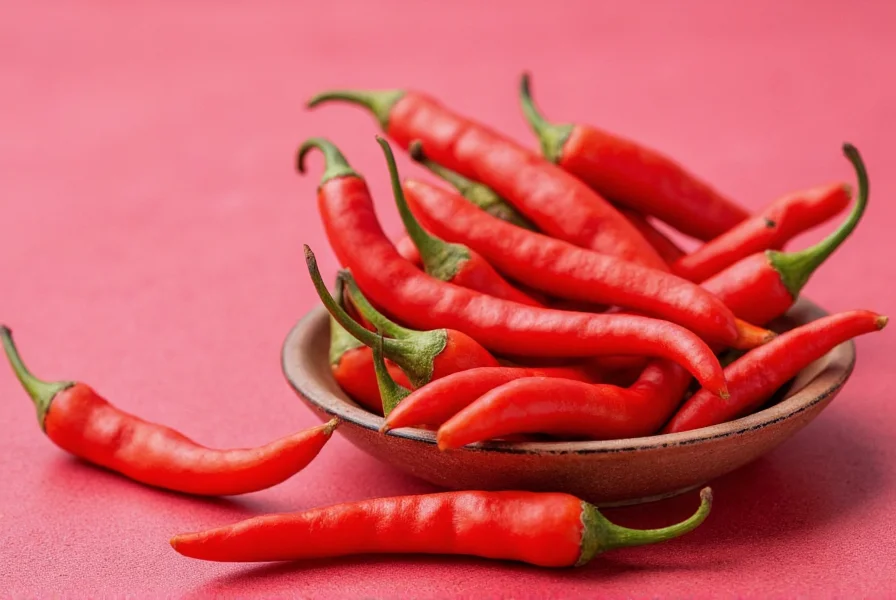A cayenne pepper shot has gained popularity as a health tonic, often consumed first thing in the morning as part of wellness routines. This simple preparation leverages capsaicin, the compound responsible for chili peppers' heat, which interacts with TRPV1 receptors in the body. Understanding both the scientifically supported benefits and limitations is crucial for making informed decisions about incorporating this practice into your health regimen.
The Science of Capsaicin in Cayenne Pepper
Capsaicin, the primary bioactive component in cayenne pepper, triggers thermogenesis—the body's heat production process. Research published in Chemical Senses demonstrates that capsaicin activates transient receptor potential vanilloid 1 (TRPV1) channels, potentially increasing energy expenditure. A meta-analysis in Appetite journal found capsaicin consumption correlated with modest increases in metabolic rate (approximately 50-100 calories daily) and reduced appetite, though effects vary significantly between individuals.

Evidence-Based Benefits of Cayenne Pepper Shots
While social media often exaggerates the effects of cayenne pepper shots, several benefits have scientific backing:
- Temporary metabolic boost: Studies show a short-term increase in calorie burning after consumption
- Pain modulation: Topical capsaicin is FDA-approved for pain relief; oral consumption may have similar but milder effects
- Circulatory effects: May cause temporary vasodilation, improving blood flow
- Antioxidant properties: Cayenne contains vitamin C and other antioxidants
It's important to note that research on cayenne pepper shots specifically is limited. Most studies examine capsaicin in various forms rather than the popular morning shot preparation. The American Journal of Clinical Nutrition reports that while capsaicin shows promise for weight management, effects are modest and work best as part of comprehensive lifestyle changes—not as standalone solutions.
How to Make a Cayenne Pepper Shot Properly
Creating an effective cayenne pepper shot requires proper measurements to balance potential benefits with tolerability:
| Ingredient | Amount | Purpose |
|---|---|---|
| Fresh lemon juice | 2 tablespoons | Provides vitamin C, balances heat, supports digestion |
| Raw honey | 1 teaspoon | Sothes throat, provides quick energy, balances pH |
| Cayenne pepper | 1/8-1/4 teaspoon | Source of capsaicin (start low, increase gradually) |
| Room temperature water | 4-6 ounces | Dilutes concentration, makes consumption tolerable |
For beginners, start with 1/8 teaspoon of cayenne pepper and gradually increase as your tolerance develops. Consume immediately after preparation, preferably on an empty stomach in the morning. Some people report better tolerance when taking it with a small amount of food if digestive sensitivity is a concern.
Safety Considerations and Potential Side Effects
While generally safe for most adults in moderation, cayenne pepper shots can cause adverse effects:
- Digestive discomfort: Burning sensation, heartburn, or stomach upset (particularly in those with GERD or ulcers)
- Medication interactions: May enhance effects of blood thinners like warfarin
- Oral irritation: Temporary burning sensation in mouth and throat
- Hypotension risk: May lower blood pressure excessively in some individuals
The Journal of Ethnopharmacology notes that while culinary amounts of cayenne are safe, concentrated forms like shots may cause gastrointestinal irritation in sensitive individuals. People with irritable bowel syndrome, Crohn's disease, or ulcerative colitis should consult a healthcare provider before regular consumption.
Debunking Common Cayenne Pepper Shot Myths
Several popular claims about cayenne pepper shots lack scientific support:
- "Detoxification" claims: The body naturally detoxifies through liver and kidneys; no evidence cayenne enhances this process
- Dramatic weight loss: Any weight loss is likely water weight or from reduced appetite, not fat burning
- "Cleansing" properties: No scientific basis for claims of colon cleansing or parasite removal
- Immune system "boost": While vitamin C supports immunity, the amount in a shot is minimal
Registered dietitians emphasize that sustainable health improvements come from balanced nutrition and lifestyle factors, not quick fixes. A cayenne pepper shot might complement a healthy routine but shouldn't replace evidence-based health practices.
When to Consult a Healthcare Professional
Certain individuals should seek medical advice before incorporating cayenne pepper shots into their routine:
- Those taking blood thinners or medications for high blood pressure
- People with gastrointestinal conditions like ulcers, IBS, or inflammatory bowel disease
- Individuals scheduled for surgery within two weeks (due to potential bleeding risk)
- Pregnant or breastfeeding women
- People with known pepper allergies
Healthcare providers can help determine if cayenne pepper shots align with your specific health circumstances and medication regimen. They can also provide guidance on appropriate dosage and frequency based on your individual health profile.
Practical Integration into Daily Routine
If you decide to try cayenne pepper shots, consider these evidence-based recommendations:
- Start with small amounts (1/8 teaspoon) and gradually increase as tolerated
- Consume in the morning on an empty stomach for best absorption
- Follow with a glass of water to minimize throat irritation
- Track your experience in a journal to monitor effects and side effects
- Combine with other healthy habits rather than relying on it as a standalone solution
Remember that individual responses vary significantly. What works well for one person might cause discomfort for another. Listen to your body's signals and adjust accordingly. The most sustainable health practices are those that fit comfortably within your lifestyle without causing distress.
Conclusion: A Balanced Perspective
Cayenne pepper shots offer some scientifically supported benefits, particularly regarding temporary metabolic effects and potential pain modulation. However, they're not miracle solutions for weight loss or detoxification as often portrayed online. When prepared properly and consumed in moderation, they can be a safe addition to a healthy lifestyle for most adults. The key is maintaining realistic expectations while prioritizing overall dietary patterns and lifestyle factors that have stronger evidence for long-term health benefits.
Frequently Asked Questions
How often should I take a cayenne pepper shot for best results?
Most research suggests daily consumption provides consistent effects, but start with every other day to assess tolerance. The optimal frequency is once daily, preferably in the morning. However, if you experience digestive discomfort, reduce frequency to 2-3 times weekly. Long-term daily use beyond 8 weeks hasn't been extensively studied, so periodic breaks may be prudent.
Can cayenne pepper shots help with weight loss?
Cayenne pepper shots may support weight management through modest metabolic increases (approximately 5%) and potential appetite reduction, but they're not a standalone weight loss solution. A study in Appetite journal found capsaicin consumption correlated with consuming about 50-75 fewer calories at subsequent meals. Significant weight loss requires comprehensive lifestyle changes including balanced nutrition and regular physical activity.
What's the best time to take a cayenne pepper shot?
Morning consumption on an empty stomach appears most effective for metabolic benefits, as your body can process it without competing with other foods. Some people report better tolerance when taking it with a small amount of food if they have sensitive stomachs. Avoid taking it before bed as the metabolic boost might interfere with sleep for some individuals. Consistency matters more than precise timing—choose a time you can maintain regularly.
Are there any long-term risks of daily cayenne pepper shot consumption?
Limited research exists on long-term daily consumption of cayenne pepper shots specifically. While culinary use of cayenne is considered safe, concentrated daily doses might potentially irritate the gastrointestinal tract over time. People with pre-existing digestive conditions should exercise caution. No evidence suggests serious long-term risks for healthy individuals at moderate doses, but consulting a healthcare provider for personalized advice is recommended, especially for ongoing use beyond several months.
Can I make a cayenne pepper shot without honey for a lower sugar option?
Yes, you can substitute honey with alternatives like a few drops of stevia, a small amount of pure maple syrup, or simply omit the sweetener. The honey primarily serves to balance the intense heat and make the shot more palatable. Some people use a small slice of apple or pear for natural sweetness. If omitting sweetener entirely, consider reducing the cayenne amount slightly (to 1/16 teaspoon) to maintain tolerability while still receiving potential benefits.











 浙公网安备
33010002000092号
浙公网安备
33010002000092号 浙B2-20120091-4
浙B2-20120091-4